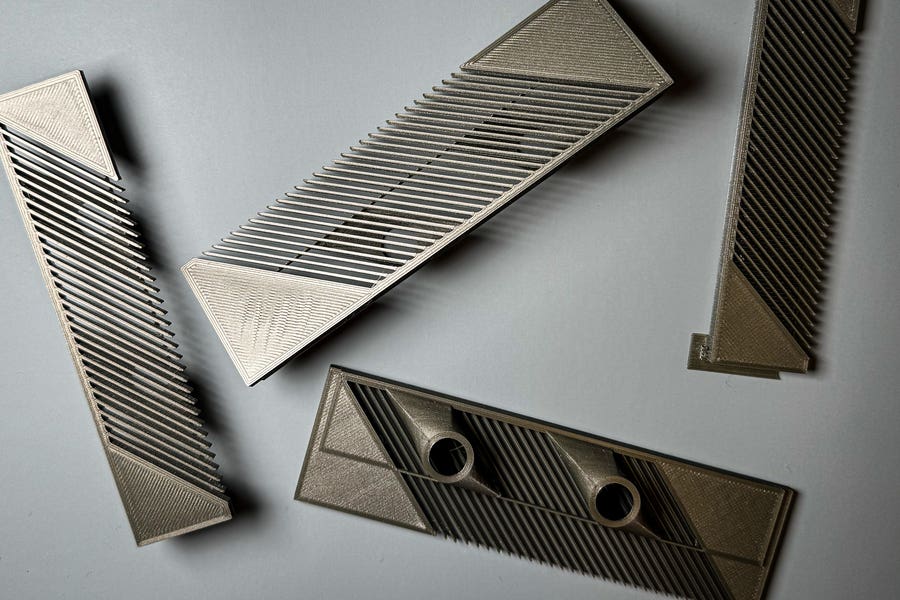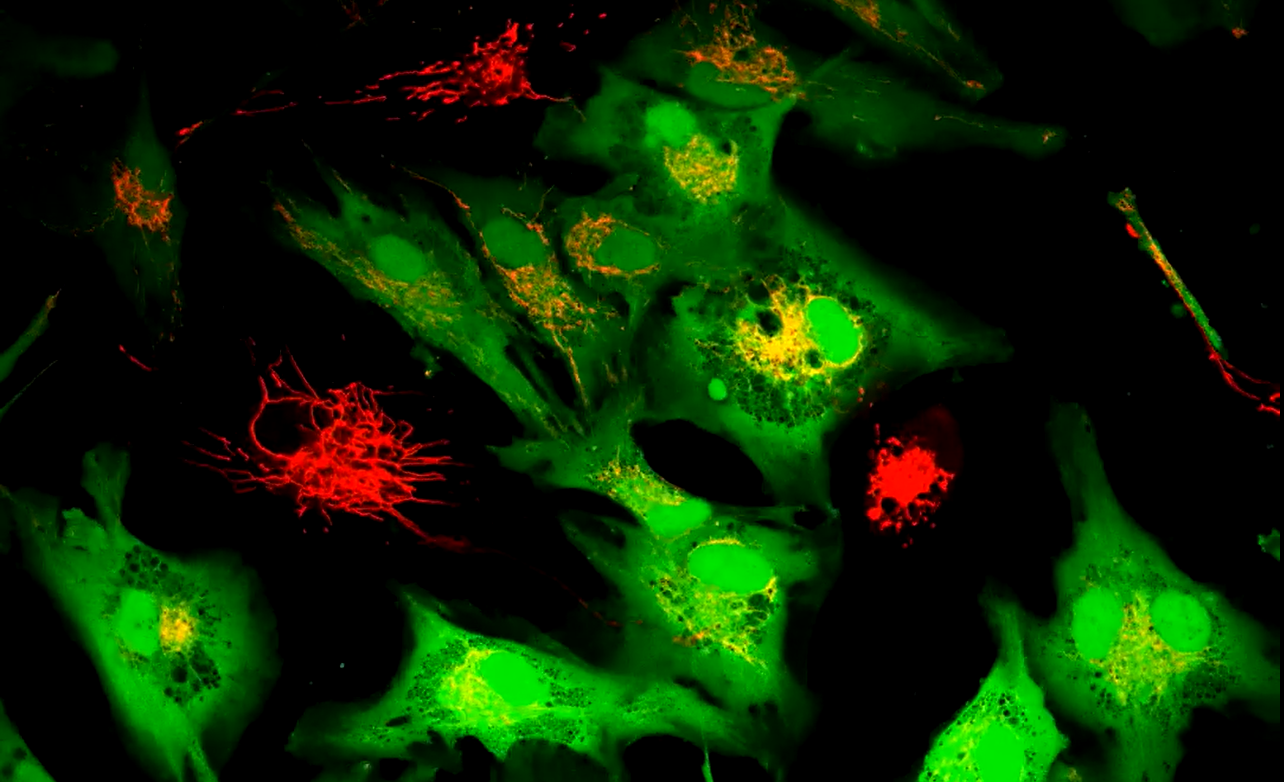Scientists are inspired by manta rays to design better water filters
Mobula rays’ natural filtration mechanisms provide insights for improving industrial filters, blending biological elegance with engineering innovation.

Engineers fabricated a simple water filter modeled after the mobula ray’s plankton-filtering features. Pictured are pieces of the filter. (CREDIT: Jennifer Chu)
Filter feeders in the animal kingdom showcase a variety of strategies to capture food from water, from the intricate structures of barnacles to the massive sieve-like mouths of baleen whales.
Among these, mobula rays, a group of aquatic rays that includes mantas and devil rays, stand out for their uniquely efficient feeding method. These rays balance breathing and feeding seamlessly, a feat that has captured the interest of researchers aiming to optimize industrial filtration systems.
Mobula rays glide through plankton-rich waters with open mouths, letting water stream in and out through their gills. Inside their mouths, comb-like structures called filter plates trap plankton, their primary food source.
These plates, lining the floor of their mouths, perform a dual function: oxygen extraction from water and particle filtration. This dual-purpose system fascinated researchers from MIT, who investigated how the geometry of these plates might improve water filtration technologies.
Nature’s Perfect Trade-Off
Designing an effective water filter requires balancing two key factors: permeability and selectivity. Permeability determines how easily water flows through a filter, while selectivity ensures that unwanted particles are captured. Industrial filters often struggle to achieve both efficiently.
Filters with larger pores are permeable but lack selectivity, while smaller pores improve selectivity at the cost of higher energy demands.
Mobula rays have mastered this trade-off. The geometry of their plates allows water to flow swiftly through their gills, ensuring adequate oxygen intake, while simultaneously filtering out tiny plankton particles.
Related Stories
"The mobula ray has evolved the geometry of these plates to be the perfect size to balance feeding and breathing," notes Anette “Peko” Hosoi, an MIT mechanical engineering professor.
To understand the mechanics of mobula filtration, the MIT team created a simplified model. Their experimental filter consisted of a "leaky channel" — a narrow acrylic tube with 3D-printed plates resembling the rays' mouth structures. By pumping dyed water through the channel, they observed fluid dynamics at various flow rates.
At slower rates, water passed through the plates with minimal disturbance, allowing particles to escape. However, as the flow rate increased, vortices formed between the plates.
These swirling currents blocked particles from escaping, even those smaller than the spacing between the plates. Instead of passing through, the particles were directed deeper into the channel, mimicking how mobula rays trap plankton.
"This vortex is not blocking water, but it is blocking particles," explains Hosoi. The finding revealed a critical insight: vortices are the key to the rays’ efficient filtration. By swimming at just the right speed, mobula rays naturally create vortices that enhance their ability to filter plankton while letting water flow freely for breathing.
Evolutionary Insight Meets Engineering
The researchers’ findings published in the journal PNAS, bridge biological evolution with industrial engineering. By analyzing the dynamics of mobula ray filtration, they developed guidelines for designing industrial filters. These filters, like the rays’ plates, could optimize permeability and selectivity through geometry and flow rate adjustments.
Lead researcher Xinyu Mao notes that this approach "expands the design space of traditional cross-flow filtration." Current industrial cross-flow filters allow water to pass across a membrane, separating unwanted particles into a waste reservoir. The team’s mobula-inspired design could enhance this process by incorporating vortex dynamics.
The guidelines provide practical advice for engineers. For example, the size and spacing of filter pores must correspond to specific flow rates to generate vortices, ensuring efficient particle capture. "The mobula ray is giving us a really nice rule of thumb for rational design," adds Hosoi.
This research originated during the COVID-19 pandemic, as the team explored filtration mechanisms to improve face masks. As their focus shifted, they investigated natural filtration systems, leading them to mobula rays. The study highlights how biological systems, shaped by evolutionary pressures, can inspire breakthroughs in engineering.
Mobula rays face evolutionary challenges: their filters must capture enough food while maintaining the high water flow needed for breathing.
Their solution—balancing permeability with selectivity—is now guiding the design of more efficient water filtration systems. These principles could benefit industries ranging from water treatment to biomedical devices.
Toward Sustainable Solutions
By combining biological inspiration with engineering rigor, mobula ray-inspired filters could make industrial filtration systems more energy-efficient and effective. This approach aligns with broader efforts to develop sustainable technologies that reduce resource consumption.
The interplay between evolution and engineering offers a powerful reminder of nature’s ingenuity. As Mao concludes, "We have provided practical guidance on how to actually filter as the mobula ray does."
From microscopic plankton to industrial contaminants, the humble mobula ray is revolutionizing how we think about filtration.
Note: Materials provided above by The Brighter Side of News. Content may be edited for style and length.
Like these kind of feel good stories? Get The Brighter Side of News' newsletter.



